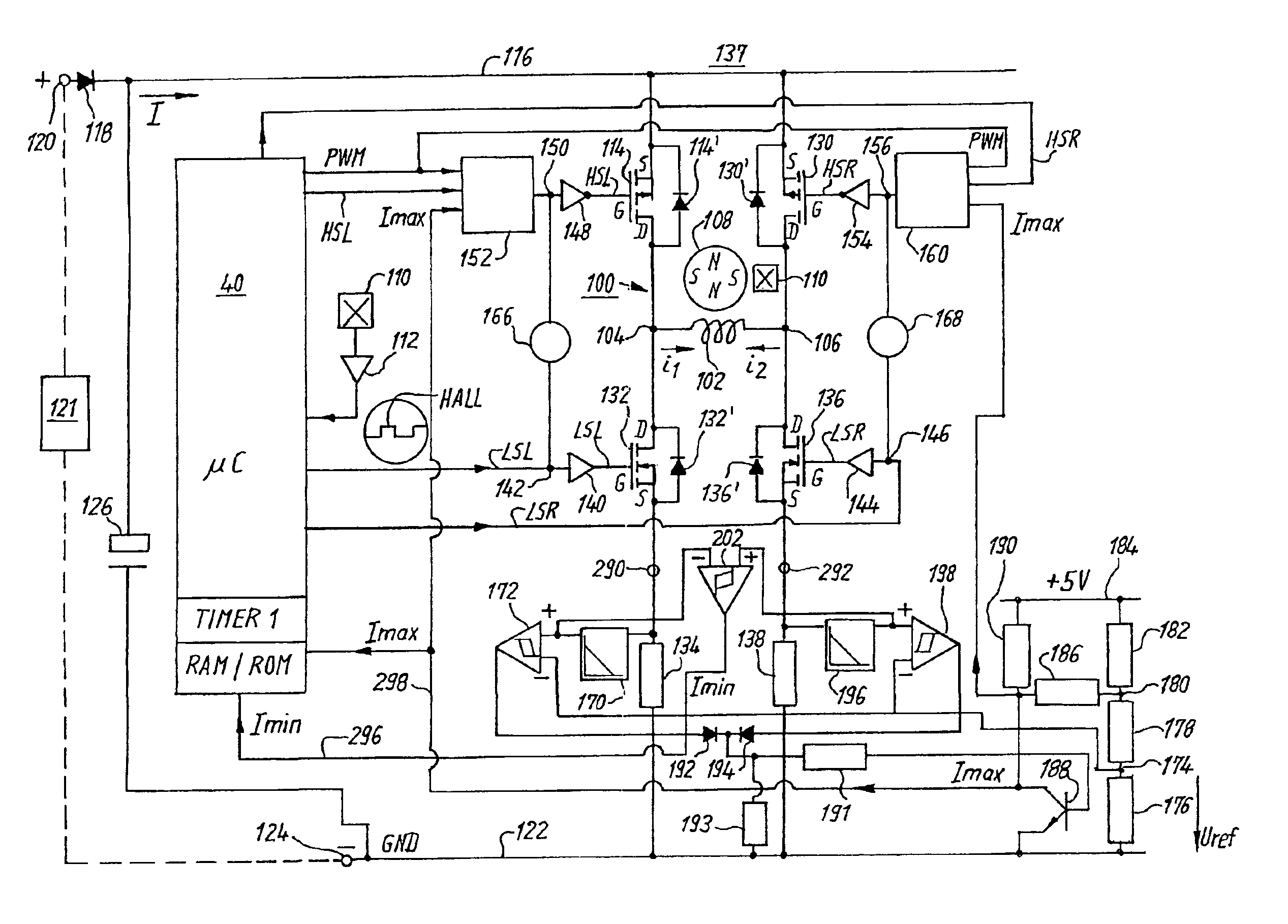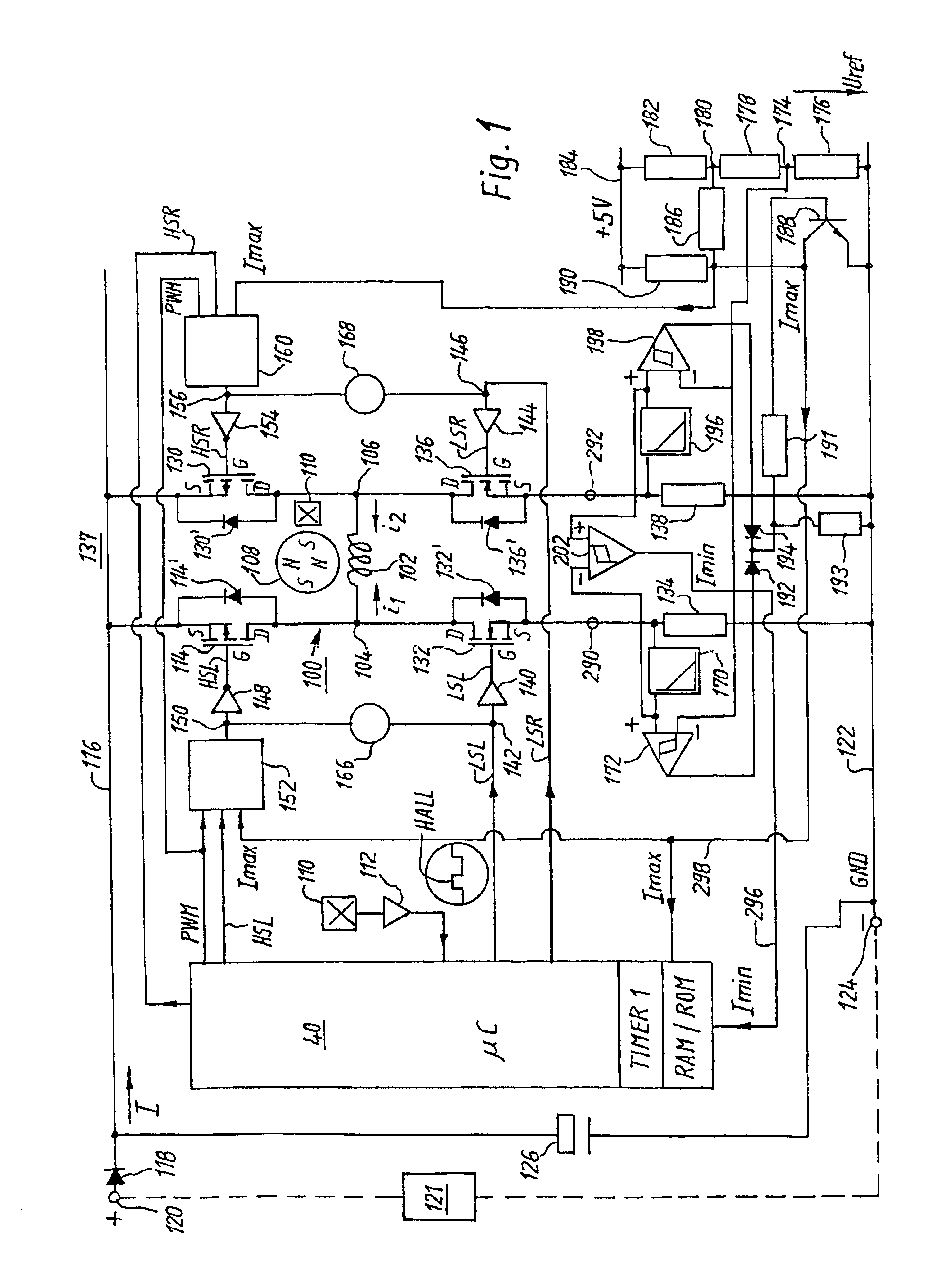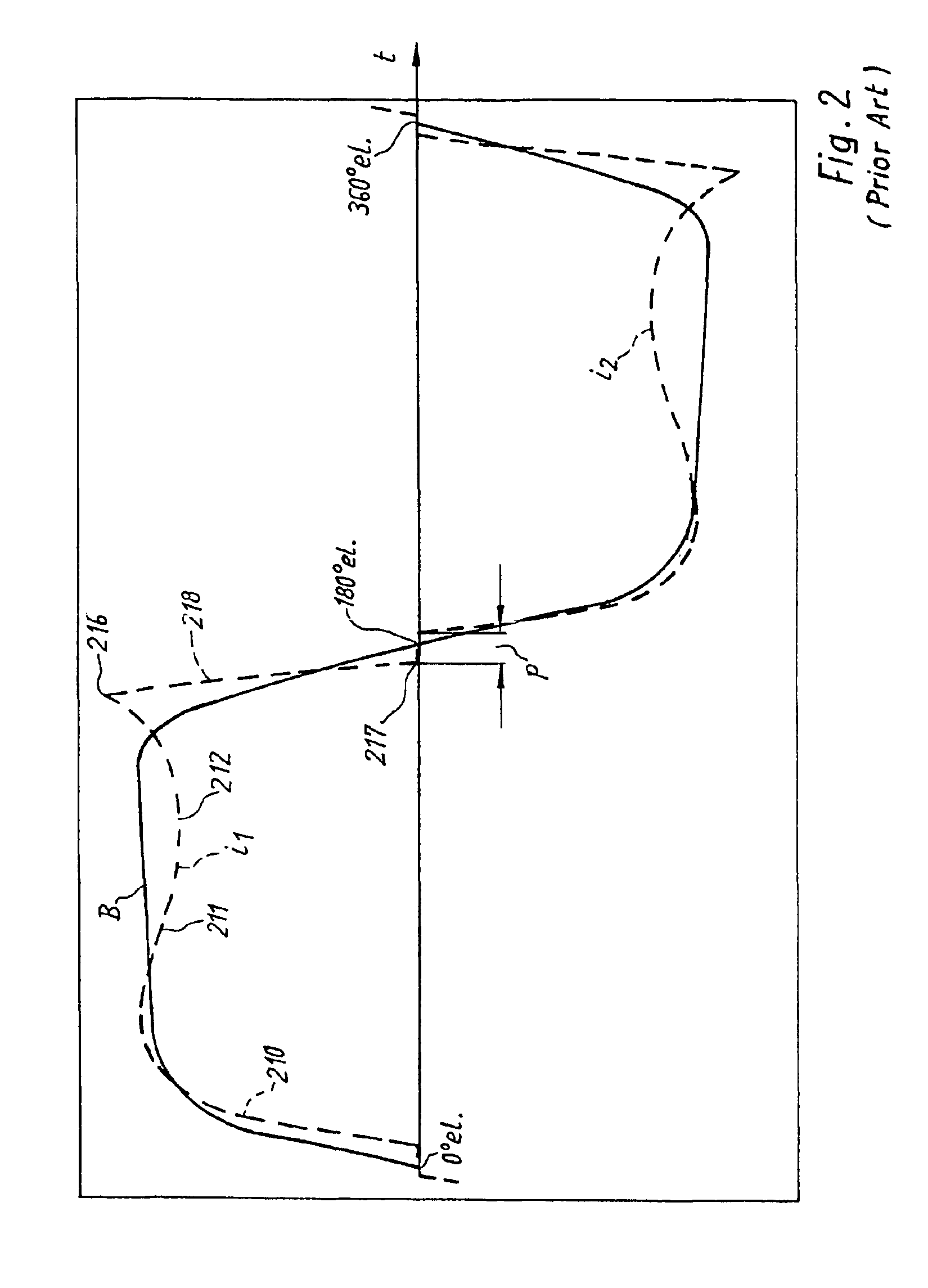Method for limiting the current in an electric motor, and a motor for carrying out one such method
a current limitation and electric motor technology, applied in the direction of dynamo-electric machines, single motor speed/torque control, ac motor stoppers, etc., can solve problems such as electrical losses in motors, and achieve the effects of simple current limiting, reducing electrical losses in motors, and reducing pulse duty factors
- Summary
- Abstract
- Description
- Claims
- Application Information
AI Technical Summary
Benefits of technology
Problems solved by technology
Method used
Image
Examples
Embodiment Construction
[0044]In the description below, identical reference characters are used for identical or identically functioning parts, which are usually described only once. Since the subject is a difficult one, concrete numerical values—e.g. 3 A, 1.6 A, 200 μs, 1000 rpm, etc.—are often indicated in order to make the text more readable. It is understood as self-evident, however, that these concrete values are merely preferred examples which in no way limit the invention.
[0045]FIG. 1 provides an overview of a preferred embodiment of a motor according to the invention.
[0046]In this embodiment, the actual motor 100 has one winding phase 102 having two terminals 104, 106, as well as a permanent-magnet rotor 108. The exemplary embodiment below refers to a motor 100 having a four-pole rotor 108, although any number of poles, and also other numbers of winding phases, are of course possible. The example of motor 100 was selected because of its simplicity, in order to facilitate comprehension of this very ...
PUM
 Login to View More
Login to View More Abstract
Description
Claims
Application Information
 Login to View More
Login to View More - R&D
- Intellectual Property
- Life Sciences
- Materials
- Tech Scout
- Unparalleled Data Quality
- Higher Quality Content
- 60% Fewer Hallucinations
Browse by: Latest US Patents, China's latest patents, Technical Efficacy Thesaurus, Application Domain, Technology Topic, Popular Technical Reports.
© 2025 PatSnap. All rights reserved.Legal|Privacy policy|Modern Slavery Act Transparency Statement|Sitemap|About US| Contact US: help@patsnap.com



